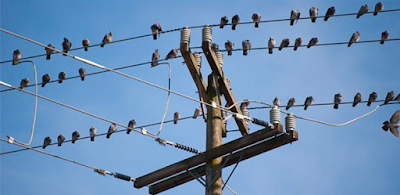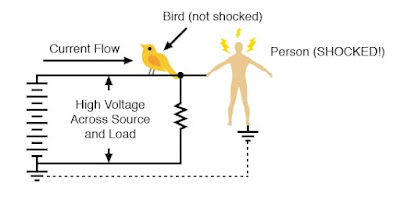On a beautiful sunny day, you glance up to find a line of little birds perched on power wires staring down at you. How do they manage to stand on an electric line without getting shocked? It's a valid question because you know that touching that line yourself will very certainly result in a deadly electric shock.
Electrocution is defined as an injury or death caused by an electrical shock. If birds aren't electrocuted while perched on an electric line, they aren't being shocked by electricity. In layman's terms, this means that electricity can travel through the birds without harming them. What are the reasons, however, that birds are not electrocuted? In a nutshell, electricity is generated by electrons moving through conductors. If birds aren't getting shocked as they fly over an electric wire, it suggests the bird isn't a good conductor of electricity. This means that birds do not allow electricity from the cable to go into their bodies.

Birds may sit on power lines because the electrical current ignores the presence of the bird and continues to flow through the wire rather than through the bird's body. The body of a bird is a poor conductor of electricity. Like water, electricity flows with the least amount of resistance possible. Copper wires carry electricity in electrical power cables. Copper is a great electrical conductor, allowing electricity to flow freely over its surface.
On the other hand, a bird is made up of cells and tissues. These cells and tissues do not give a simpler path for the electricity in the wire to travel than the one it is already on. Because a bird's body is not a strong conductor of electricity, the electricity ignores the bird on the wire and proceeds on to its goal along with the copper wiring.
There’s another reason why birds can sit on a wire without getting shocked. There’s no voltage difference in a single wire.
For electrons to move, there must be what scientists call a difference in electrical potential. For example, energy flows from areas of high voltage to areas of low voltage. If it flows through a single power line at 35,000 volts, it will continue along the path of least resistance. That means it’ll bypass birds because there’s no difference in electrical potential. This is not the case with humans as everything circuit is earthed.
Thank you for taking the time to read this article, hope you found it useful.
















